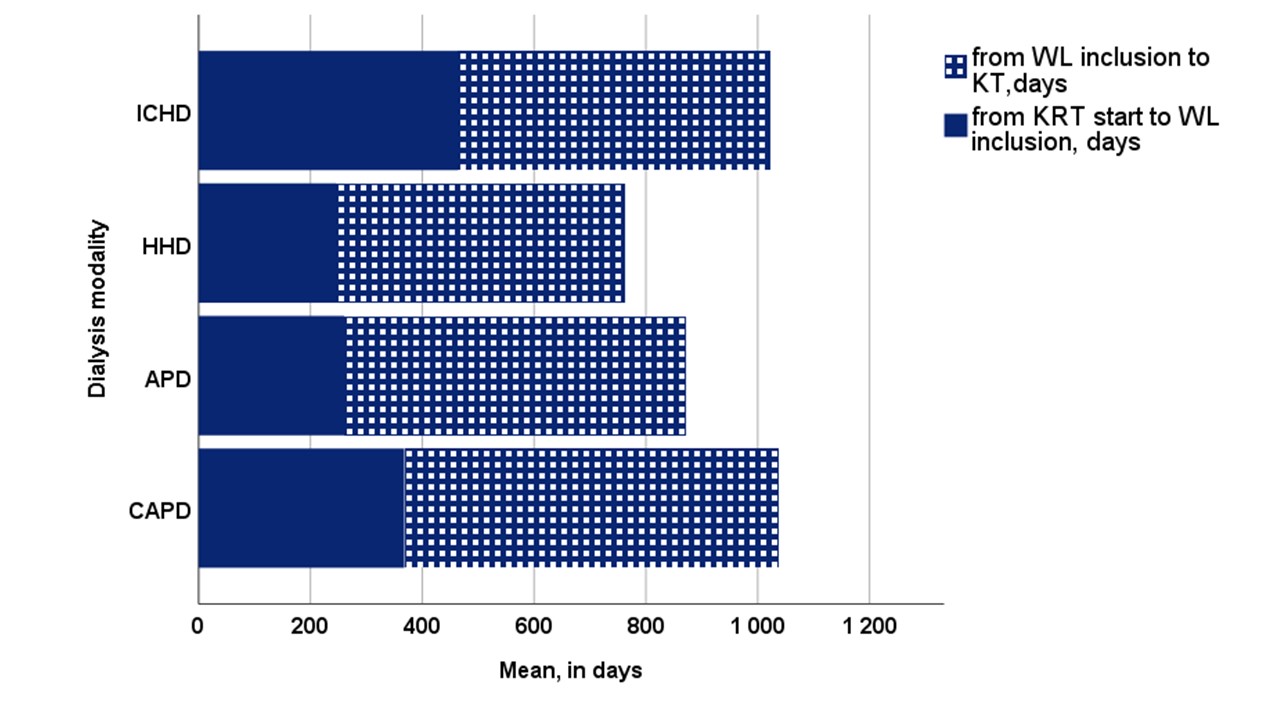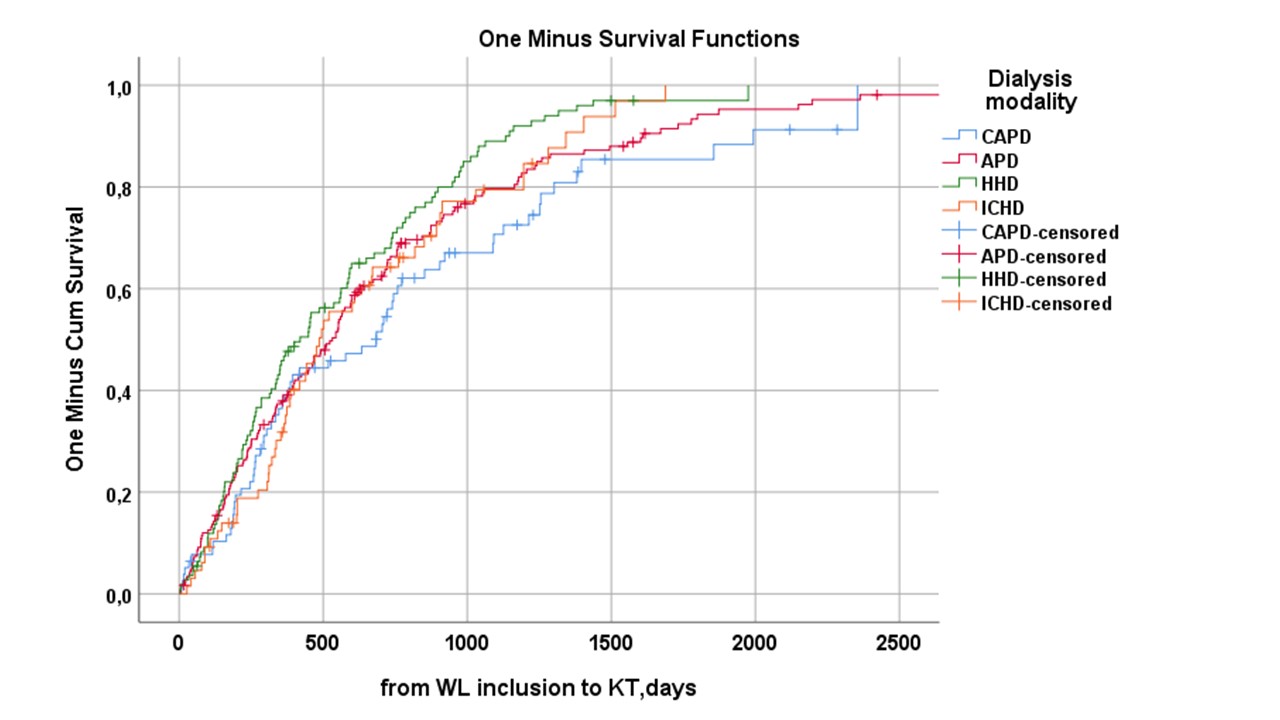Accessibility to the kidney transplantation beyond immunology
Eulalia Sola Porta2, Wisam Bitar1, Jaakko Helve1, Patrik Finne1, Fernanda Ortiz1.
1Abdominal center, Nephrology, Helsinki University Hospital, Helsinki, Finland; 2Nephrology, Hospital del Mar, Barcelona, Spain
Background: Kidney transplantation (KT) has proven to be the preferable kidney replacement therapy (KRT) as it provides a better survival and quality of life. Well-known patient-related factors influencing patients’ access to KT are blood type, age, comorbidities, and pre-sensitization to HLA antigens. Research on home dialysis modalities´ effect on this matter is scarce.
Methods: We included all adult patients who started kidney replacement therapy (KRT) between 2004 and 2017 in the Helsinki University Hospital treated with home dialysis modalities (N=536), including home hemodialysis (HHD) and peritoneal dialysis; both CAPD and APD. A control group of in-center HD (ICHD) patients was randomly selected (N=200). The patients were followed-up until kidney transplantation, death, or end of follow-up in December 2020. We retrieved from registries variables with a potential effect on access to transplantation, of special interest we considered dialysis modality at 90 days after initiating KRT.
Results: In all, 481 out of 736 patients were waitlisted for kidney transplantation, of whom 423 were transplanted (88%), 23 patients (5%) died on the waitlist (WL), 24 were permanently removed from the WL (5%) and 11 were still on the WL at the end of FU. The probability of waitlisting was 2.1 as high in CAPD patients (p=0.004), and 7.9 times as high in both APD and HHD patients (p<0.001) compared to ICHD. Cardiovascular morbidity did not affect waitlisting. Of those who were waitlisted, both ICHD (N=74) and CAPD (N=80) patients were older than APD (N=199) and HHD (N=128) patients (mean age 54; 56; 48 and 49 YO respectively). Mean (95% CI) time elapsed from KRT initiation to WL inclusion was 307 days (251-362), time from WL to KT was 458 days (542-636) and time off the WL due to an intercurrence was 96 days (80-112). There were no differences between dialysis modalities in terms of time from WL to KT (p=0.176), but time to WL was significantly longer in ICHD patients (p=0.014) (Figure 1) The time off the WL equally delayed KT irrespective of the dialysis mode. (p=0.141)

Dialysis modalities had an impact on the time elapsed from WL to KT (log rank p=0.028). (Figure 2) By Cox regression analysis the variables that were significantly related with the outcome were panel reactive antibodies type 1 (p=0.033), and time off the WL (p<0.001), while cardiovascular comorbidity (p=0.246), dialysis modality (p=0.208), malignancy (p=0.675), panel reactive antibodies type 2 (p=0.679) and age (p=0.054) did not reach the level of significance. Altogether 732 episodes resulted in the patients being temporarily removed from the WL, and the most common reasons were PD-peritonitis (20%), other infections (26%), and surgery/dental treatment (10%). On the other hand, both vascular access complications (1%) and cardiovascular intercurrences (4.9%) were uncommon.

Conclusions: Dialysis modality significantly influences patients’ access to transplantation. APD and HHD modalities provided a benefit in terms of accessing the WL. In patients wait listed, intercurrent complications during dialysis, mainly infections, significantly prolonged the waiting time for KT in all patients beyond immunological reasons.

right-click to download
